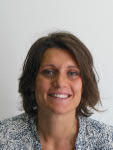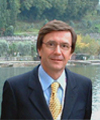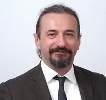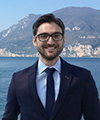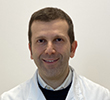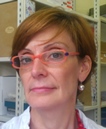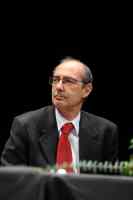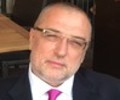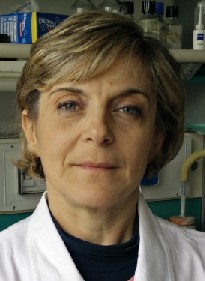Studying at the University of Verona
Here you can find information on the organisational aspects of the Programme, lecture timetables, learning activities and useful contact details for your time at the University, from enrolment to graduation.
Academic calendar
The academic calendar shows the deadlines and scheduled events that are relevant to students, teaching and technical-administrative staff of the University. Public holidays and University closures are also indicated. The academic year normally begins on 1 October each year and ends on 30 September of the following year.
Course calendar
The Academic Calendar sets out the degree programme lecture and exam timetables, as well as the relevant university closure dates..
| Period | From | To |
|---|---|---|
| 1° e 2° semestre (corsi annuali) PROFESSIONI SANITARIE | Oct 3, 2022 | Sep 30, 2023 |
| 1 SEMESTRE PROFESSIONI SANITARIE | Oct 3, 2022 | Dec 23, 2022 |
| 2 SEMESTRE PROFESSIONI SANITARIE | Jan 9, 2023 | Sep 30, 2023 |
| Session | From | To |
|---|---|---|
| Sessione Esami Invernale 3 ANNO | Nov 29, 2022 | Dec 23, 2022 |
| Sessione Esami Invernale 1 e 2 ANNO CLID | Jan 9, 2023 | Feb 3, 2023 |
| Sessione Esami Estiva 2 ANNO CLID | Apr 3, 2023 | Apr 14, 2023 |
| Sessione Esami Estiva 1 ANNO CLID | Apr 20, 2023 | May 5, 2023 |
| Sessione Esami Estiva 3 ANNO | May 15, 2023 | May 26, 2023 |
| Sessione Esami Estiva 2 ANNO CLID II | Jun 5, 2023 | Jun 21, 2023 |
| Sessione Esami Estiva 3 ANNO CLID II | Jul 10, 2023 | Jul 28, 2023 |
| Sessione Esami Estiva 1 ANNO CLID II | Jul 17, 2023 | Jul 28, 2023 |
| Sessione Esami Autunnale CLID | Sep 1, 2023 | Sep 30, 2023 |
| Sessione Esami Straordinaria | Dec 1, 2023 | Jan 31, 2024 |
| Session | From | To |
|---|---|---|
| Sessione di Laurea Autunnale CLID | Oct 1, 2023 | Nov 30, 2023 |
| Sessione di Laurea Primaverile CLID | Mar 1, 2024 | Apr 30, 2024 |
| Period | From | To |
|---|---|---|
| Ricorrenza di Ognissanti | Nov 1, 2022 | Nov 1, 2022 |
| Ricorrenza dell'Immacolata Concezione | Dec 8, 2022 | Dec 8, 2022 |
| Description | Period | From | To |
|---|---|---|---|
| Tirocinio 2 anno 1^ Periodo | Tirocinio 2 anno 1^ Periodo | Nov 21, 2022 | Dec 23, 2023 |
| Tirocinio 3 anno 1^ Periodo | Tirocinio 3 anno 1^ Periodo | Jan 9, 2023 | Feb 10, 2023 |
| Tirocinio 3 anno 2^ Periodo | Tirocinio 3 anno 2^ Periodo | Feb 20, 2023 | Mar 24, 2023 |
| Tirocinio 2 anno 2^ Periodo | Tirocinio 2 anno 2^ Periodo | Apr 17, 2023 | May 26, 2023 |
| Tirocinio 1 anno 1^ Periodo | Tirocinio 1 anno 1^ Periodo | May 8, 2023 | Jul 14, 2023 |
| Tirocinio 3 anno 3^ Periodo | Tirocinio 3 anno 3^ Periodo | May 29, 2023 | Jun 30, 2023 |
| Tirocinio 2 anno 3^ Periodo | Tirocinio 2 anno 3^ Periodo | Jun 27, 2023 | Aug 4, 2023 |
| Tirocinio 1 anno 2^ Periodo | Tirocinio 1 anno 2^ Periodo | Aug 28, 2023 | Sep 30, 2023 |
| Tirocinio 3 anno 4^ Periodo | Tirocinio 3 anno 4^ Periodo | Aug 28, 2023 | Sep 30, 2023 |
| Tirocinio 2 anno 4^ Periodo | Tirocinio 2 anno 4^ Periodo | Sep 1, 2023 | Sep 30, 2023 |
Exam calendar
Exam dates and rounds are managed by the relevant Medicine Teaching and Student Services Unit.
To view all the exam sessions available, please use the Exam dashboard on ESSE3.
If you forgot your login details or have problems logging in, please contact the relevant IT HelpDesk, or check the login details recovery web page.
Should you have any doubts or questions, please check the Enrollment FAQs
Academic staff
 francesco.antonucci@aocardarelli.it
francesco.antonucci@aocardarelli.it
 martina.bonetti@apss.tn.it
martina.bonetti@apss.tn.it
 borghesi.a@mail.apss.tn.it
borghesi.a@mail.apss.tn.it
 fulviocampolongo@gmail.com
fulviocampolongo@gmail.com
 elena.carrara@univr.it
elena.carrara@univr.it
 francesca.fontana@univr.it
francesca.fontana@univr.it
 renata.lazzeri@apss.tn.it
renata.lazzeri@apss.tn.it
 mattia.marchiori@univr.it
mattia.marchiori@univr.it
 loredana.pancheri@univr.it
loredana.pancheri@univr.it
Study Plan
The Study Plan includes all modules, teaching and learning activities that each student will need to undertake during their time at the University.
Please select your Study Plan based on your enrollment year.
1° Year
| Modules | Credits | TAF | SSD |
|---|
2° Year activated in the A.Y. 2023/2024
| Modules | Credits | TAF | SSD |
|---|
3° Year It will be activated in the A.Y. 2024/2025
| Modules | Credits | TAF | SSD |
|---|
| Modules | Credits | TAF | SSD |
|---|
| Modules | Credits | TAF | SSD |
|---|
| Modules | Credits | TAF | SSD |
|---|
Legend | Type of training activity (TTA)
TAF (Type of Educational Activity) All courses and activities are classified into different types of educational activities, indicated by a letter.
Morphological and functional fundamentals of life (2022/2023)
Teaching code
4S000039
Credits
7
Coordinator
Language
Italian
Also offered in courses:
- Foundations of anatomy, physiology and pathology of living organisms - ANATOMIA UMANA of the course Bachelor's degree in Psychiatric Rehabilitation Techniques
- Biomedical sciences and action of risk factors - ANATOMIA of the course Bachelor's degree in Environmental and Workplace Accident Prevention Techniques (interuniversity)
The teaching is organized as follows:
Learning objectives
Teaching aims to provide knowledge of human biology in an evolutionary vision with particular reference to the molecular and cellular processes common to all living organisms, to raise awareness of the structures and functions of biological macromolecules and the main metabolic pathways in which they are involved. The student should be able to explain the cellular mechanisms underlying the functioning of the whole organism and grasp the pathogenic meaning of any alterations of them; it should also be able to recognize the different ways in which Mendelian characters are transmitted in humans. BIOCHEMICAL MODULE Training objectives: The course aims to present the relationship between the structure and function of biological macromolecules and the main metabolic pathways in which they are involved. The key objective is to stimulate the student's interest in biomolecular sciences by giving maximum prominence to the interconnections between biochemical processes and the energy variations associated with them. At the end of the teaching, students will have to demonstrate that they have acquired terminology and useful knowledge for a critical analysis of vital biochemical processes in order to achieve autonomy of critical and comprehensive evaluation of the processes themselves. APPLIED BIOLOGY MODULE Training objective: Providing knowledge of human biology in an evolutionary vision with particular reference to the molecular and cellular processes common to all living organisms. Provide knowledge about the mutagenic action of chemical and physical agents. Provide knowledge about the transmission of hereditary characters. The student should be able to explain the cellular mechanisms underlying the functioning of the whole organism and grasp the pathogenic meaning of any alterations of them; students must also be able to recognize the different ways in which Mendelian characters are transmitted in humans. At the end of the teaching, students will have to demonstrate that they have acquired the basic knowledge of the mechanisms that govern life and cell reproduction, the interactions between cells, between organisms and between organisms and the environment. They will also need to demonstrate to have acquired knowledge about the mechanisms of transmission of hereditary characters and will have to be able to recognize how genetic diseases are transmitted in humans, particularly those relating to tooth development and structure. These basic knowledge is a prerequisite for further specialist insights that will be the subject of teachings in the following years of the Course.
Bibliography
Career prospects
Module/Programme news
News for students
There you will find information, resources and services useful during your time at the University (Student’s exam record, your study plan on ESSE3, Distance Learning courses, university email account, office forms, administrative procedures, etc.). You can log into MyUnivr with your GIA login details: only in this way will you be able to receive notification of all the notices from your teachers and your secretariat via email and also via the Univr app.
Gestione carriere
Orario Lezioni
Documents
| Title | Info File |
|---|---|
|
|
pdf, it, 60 KB, 09/07/24 |
|
|
pdf, it, 1228 KB, 25/01/23 |
|
|
pdf, it, 1453 KB, 07/02/24 |
Graduation
Documents
| Title | Info File |
|---|---|
|
|
pdf, it, 714 KB, 13/11/23 |
Student login and resources
in questa sede verranno pubblicati i calendari delle lezioni
 0461-364187 364174 o 0464 582475
0461-364187 364174 o 0464 582475

